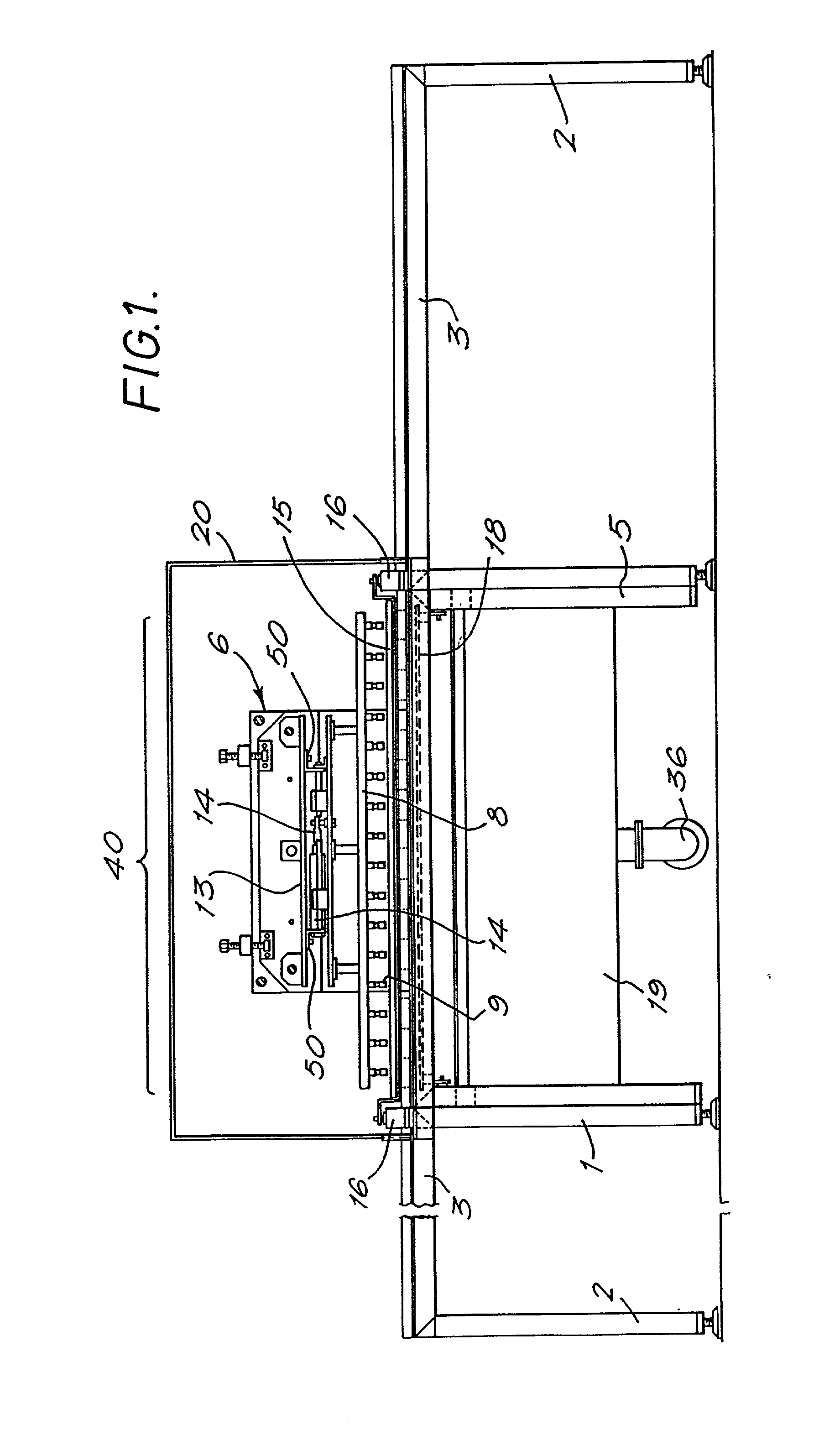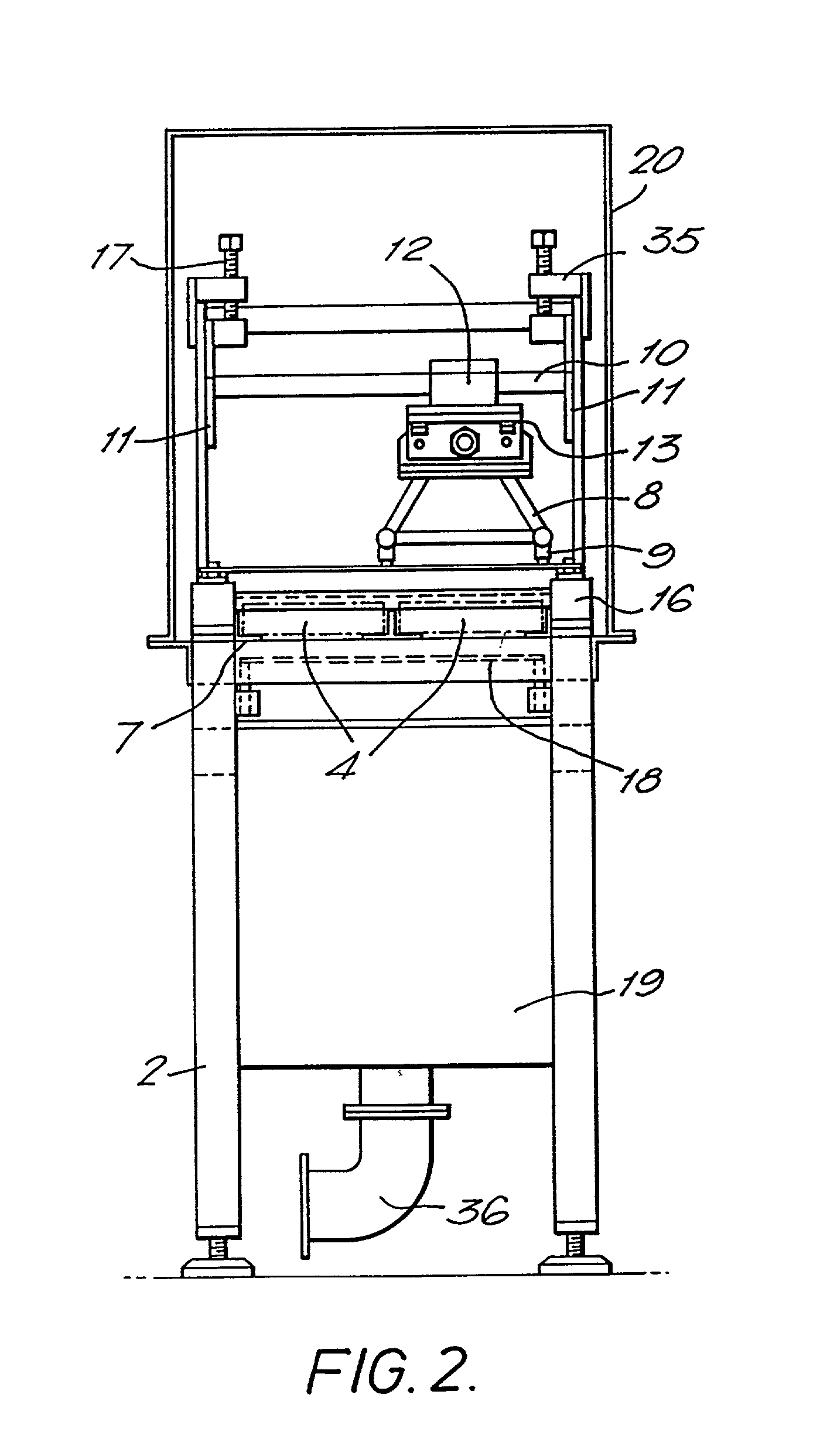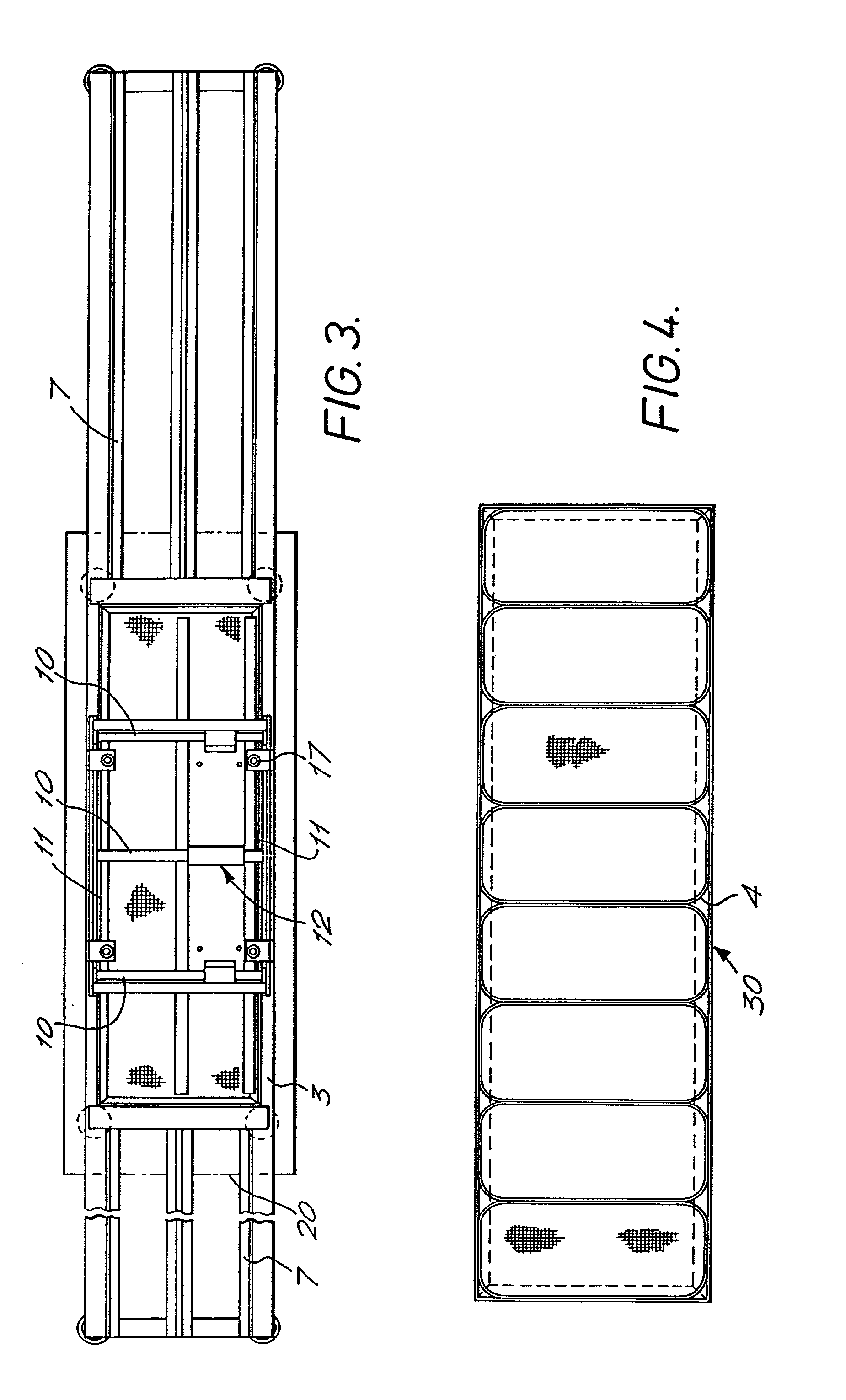Skin loosening or removal process and apparatus
a skin loosening or removal process technology, applied in the direction of gas current separation, hulling, husking, etc., can solve the problems of affecting the operation of the apparatus, the pre-treatment steps may be undesirable, and the equipment required for such pre-treatments moreover involve considerable extra plant investment costs and maintenance costs, and particular forms of pre-treatment also have their particular associated problems
- Summary
- Abstract
- Description
- Claims
- Application Information
AI Technical Summary
Benefits of technology
Problems solved by technology
Method used
Image
Examples
first embodiment
[0073] the apparatus comprises a main frame 1 having four pairs of support legs 2, a platform 3 supported by the legs and receiving four product trays 30 made up of product receiving means in the form of cages 4, and a centre frame 5 mounted between the two pairs of centrally positioned legs and 10 supporting thereon a water supply mechanism 6. The water supply mechanism is arranged above a product processing area 40 defined centrally of the platform 3.
[0074] The frame and tray components are made from stainless steel for its anti-corrosive properties although alternative materials such as other suitable metals or plastics may be used.
[0075] As seen in FIG. 4, each product tray 30 comprises eight cages arranged in a row. Any suitable number of cages may be used, joined together or separate. Two pairs of product trays 30 are provided, the trays of each pair being arranged side by side. The trays are slidably received on rails 7 which extend along the length of the apparatus and whic...
second embodiment
[0091] As is most clearly visible from FIG. 5, the product receiving means in the form of product carriers 150 in the second embodiment are arranged on an endless conveyor chain 152. The conveyor chain loops around two pulleys and follows a forward, upwardly facing path and a return, downwardly facing path. The chain is driven by a drive assembly 154. The receiving means are only shown at one end of the chain for clarity purposes.
[0092] As can be seen from FIGS. 11 to 13, each of the product carriers 150 is in the form of a generally cuboid block, having an annular recess 156 in its upper surface 158 which serves to receive the products. There is an upstanding central region 160 serving to define the radially inner wall of the annular recess 156. The recess and the upstanding central region can also be seen in FIGS. 5 and 7.
[0093] In cross-section, the shape of the recess 156 is generally U-shaped, as shown in FIG. 10. The lower surface 162 of the recess 156 is formed with raised ri...
PUM
 Login to View More
Login to View More Abstract
Description
Claims
Application Information
 Login to View More
Login to View More - R&D
- Intellectual Property
- Life Sciences
- Materials
- Tech Scout
- Unparalleled Data Quality
- Higher Quality Content
- 60% Fewer Hallucinations
Browse by: Latest US Patents, China's latest patents, Technical Efficacy Thesaurus, Application Domain, Technology Topic, Popular Technical Reports.
© 2025 PatSnap. All rights reserved.Legal|Privacy policy|Modern Slavery Act Transparency Statement|Sitemap|About US| Contact US: help@patsnap.com



